|
Books Should Be Free Loyal Books Free Public Domain Audiobooks & eBook Downloads |
|
|
Books Should Be Free Loyal Books Free Public Domain Audiobooks & eBook Downloads |
|
Non-fiction |
|---|
|
Book type:
Sort by:
View by:
|
By: Catharine Esther Beecher (1800-1878) | |
|---|---|
 A Treatise on Domestic Economy For the Use of Young Ladies at Home and at School
A Treatise on Domestic Economy For the Use of Young Ladies at Home and at School
| |
By: Catharine Parr Traill (1802-1899) | |
|---|---|
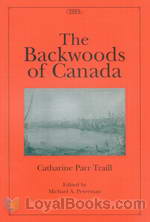 The Backwoods of Canada
The Backwoods of Canada
The writer is as earnest in recommending ladies who belong to the higher class of settlers to cultivate all the mental resources of a superior education, as she is to induce them to discard all irrational and artificial wants and mere useless pursuits. She would willingly direct their attention to the natural history and botany of this new country, in which they will find a never-failing source of amusement and instruction, at once enlightening and elevating the mind, and serving to fill up the void left by the absence of those lighter feminine accomplishments, the practice of which are necessarily superseded by imperative domestic duties... | |
By: Catherine L. Moore | |
|---|---|
 Twenty-four Little French Dinners and How to Cook and Serve Them
Twenty-four Little French Dinners and How to Cook and Serve Them
| |
By: Catherine of Genoa | |
|---|---|
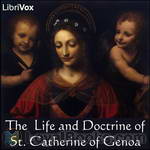 The Life and Doctrine of St. Catherine of Genoa
The Life and Doctrine of St. Catherine of Genoa
Saint Catherine of Genoa (Caterina Fieschi Adorno, born Genoa 1447 – 15 September 1510) is an Italian Roman Catholic saint and mystic, admired for her work among the sick and the poor. She was a member of the noble Fieschi family, and spent most of her life and her means serving the sick, especially during the plague which ravaged Genoa in 1497 and 1501. She died in that city in 1510.In 1551, 41 years after her death, a book about her life and teaching was published, entitled Libro de la vita mirabile et dottrina santa de la Beata Caterinetta de Genoa... | |
By: Cesare Lombroso (1835-1909) | |
|---|---|
 Crime, Its Causes and Remedies
Crime, Its Causes and Remedies
Published as the third volume in the Modern Criminal Science Series, Cesare Lombroso, renowned Italian criminologist, collected a wealth of information regarding the incidence, classification, and causes of crime. Crime calendars, the geography of crime, unusual events and circumstances leading to more frequent crime, political motivations and associations of criminal enterprise and an assessment of the real value and effectiveness of prisons and reform programs are all included in this three part volume. - Summary by Leon Harvey | |
By: Chalkley J. Hambleton | |
|---|---|
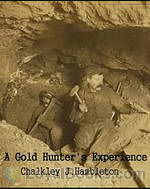 A Gold Hunter's Experience
A Gold Hunter's Experience
“Early in the summer of 1860, I had an attack of gold fever. In Chicago, the conditions for such a malady were all favorable. Since the panic of 1857 there had been three years of general depression, money was scarce, there was little activity in business, the outlook was discouraging, and I, like hundreds of others, felt blue.” Thus Chalkley J. Hambleton begins his pithy and engrossing tale of participation in the Pike’s Peak gold rush. Four men in partnership hauled 24 tons of mining equipment by ox cart across the Great Plains from St... | |
By: Charles A. (Charles Alexander) McMurry (1857-1929) | |
|---|---|
 The Elements of General Method Based on the Principles of Herbart
The Elements of General Method Based on the Principles of Herbart
| |
By: Charles A. Conant (1861-1915) | |
|---|---|
 Alexander Hamilton
Alexander Hamilton
Alexander Hamilton was a significant figure in the political and economic development of the early United States. He served in the American Revolutionary War and became an aide to General George Washington. He was one of the authors (along with John Jay and James Madison) of a series of essays know as The Federalist Papers, which were written in support of the ratification of the proposed Constitution. Scholars and others still refer to these essays to this day for interpretation of the Constitution... | |
By: Charles A. Siringo (1855-1928) | |
|---|---|
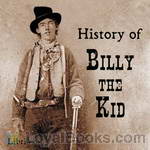 History of Billy the Kid
History of Billy the Kid
A cowboy outlaw whose youthful daring has never been equalled in the annals of criminal history.When a bullet pierced his heart he was less than twenty-two years of age, and had killed twenty-one men, Indians not included.The author feels that he is capable of writing a true and unvarnished history of "Billy the Kid," as he was personally acquainted with him, and assisted in his capture, by furnishing Sheriff Pat Garrett with three of his fighting cowboys--Jas. H. East, Lee Hall and Lon Chambers... | |
By: Charles A. Ward (1846-1908) | |
|---|---|
 Oracles of Nostradamus
Oracles of Nostradamus
Charles A. Ward was considered one of the most knowledgeable in his studies of the prophecies of Nostradamus. Ward viewed the prophecies of Nostradamus as predictions that only make sense in hindsight, rather than a tool for predicting future events. This work includes Ward's theories regarding the methods of prediction and his theoretical belief that the predictions were sequential. Ward details only a few of the actual predictions of Nostradamus in his interpretations but attempts to shed light on his theoretical orientation in hopes of making them easier to understand for the reader. - Summary by CJ Plogue | |
By: Charles Alexander Cameron (1830-1921) | |
|---|---|
 The Stock-Feeder's Manual the chemistry of food in relation to the breeding and feeding of live stock
The Stock-Feeder's Manual the chemistry of food in relation to the breeding and feeding of live stock
| |
By: Charles Alexander Eastman (1858-1939) | |
|---|---|
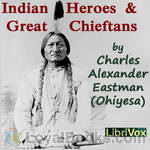 Indian Heroes and Great Chieftans
Indian Heroes and Great Chieftans
EVERY age, every race, has its leaders and heroes. There were over sixty distinct tribes of Indians on this continent, each of which boasted its notable men. The names and deeds of some of these men will live in American history, yet in the true sense they are unknown, because misunderstood. I should like to present some of the greatest chiefs of modern times in the light of the native character and ideals, believing that the American people will gladly do them tardy justice. | |
 The Soul of the Indian
The Soul of the Indian
"We also have a religion which was given to our forefathers, and has been handed down to us their children. It teaches us to be thankful, to be united, and to love one another! We never quarrel about religion." | |
 Indian Child Life
Indian Child Life
The author was raised as an American Indian and describes what it was like to be an Indian boy (the first 7 chapters) and an Indian Girl (the last 7 chapters). This is very different from the slanted way the white man tried to picture them as 'savages' and 'brutes.'Quote: Dear Children:—You will like to know that the man who wrote these true stories is himself one of the people he describes so pleasantly and so lovingly for you. He hopes that when you have finished this book, the Indians will seem to you very real and very friendly... | |
By: Charles Alexander Eastman (1858-1939) | |
|---|---|
 Indian To-day
Indian To-day
Based in part upon the author's own observations and personal knowledge, it was the aim of the book to set forth the status and outlook of the North American Indian. He addressed issues such as Indian schools, health, government policy and agencies, and citizenship in this book. In connection with his writings, Eastman was in steady demand as a lecturer and public speaker with the purpose of interpreting his race to the present age. | |
By: Charles Austin Beard (1874-1948) | |
|---|---|
 History of the United States: The Colonial Period Onwards
History of the United States: The Colonial Period Onwards
Vol. I: The Colonial Period. Charles Austin Beard was the most influential American historian of the early 20th century. He published hundreds of monographs, textbooks and interpretive studies in both history and political science. He graduated from DePauw University in 1898, where he met and eventually married Mary Ritter Beard, one of the founders of the first Greek-letter society for women, Kappa Alpha Theta. Many of his books were written in collaboration with his wife, whose own interests lay in feminism and the labor union movement (Woman as a Force in History, 1946)... | |
By: Charles B. Michener (1838-) | |
|---|---|
 Special Report on Diseases of the Horse
Special Report on Diseases of the Horse
| |
By: Charles B. Towns (1862-1947) | |
|---|---|
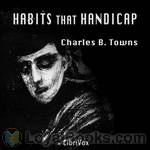 Habits that Handicap
Habits that Handicap
Habits that Handicap is one of three novels about alcholoism and drug addiction written by Charles B. Towns. Towns was an expert on alcoholism and drug addiction who helped draft drug control legislation in the United States during the early 20th century. He also founded the Towns Hospital in New York City, which aimed at drying out the well-to-do patient. | |
By: Charles Babbage (1792-1871) | |
|---|---|
 On the Economy of Machinery and Manufactures
On the Economy of Machinery and Manufactures
| |
 Passages from the Life of a Philosopher
Passages from the Life of a Philosopher
Some men write their lives to save themselves from ennui, careless of the amount they inflict on their readers. Others write their personal history, lest some kind friend should survive them, and, in showing off his own talent, unwittingly show them up. Others, again, write their own life from a different motive—from fear that the vampires of literature might make it their prey. I have frequently had applications to write my life, both from my countrymen and from foreigners. Some caterers for the public offered to pay me for it... | |
By: Charles Barker Bradford (1862-1917) | |
|---|---|
 Black Bass Where to catch them in quantity within an hour's ride from New York
Black Bass Where to catch them in quantity within an hour's ride from New York
| |
By: Charles C. Nott (1827-1916) | |
|---|---|
 Mystery of the Pinckney Draught
Mystery of the Pinckney Draught
Charles Pinckney, member of the South Carolina legislature, Confederation Congress, U.S. Congress, and notably the Constitutional Convention of 1787, may have been regarded by some as perhaps the true author of the U.S. Constitution, although most likely James Madison would vehemently argue the point. This book investigates what may, or may not have happened to the draft of the Constitution which was drawn up by Charles Pinckney and submitted to the Constitutional Convention in May of 1787, and how (or if) it differed from the Constitution which was adopted... | |
By: Charles Darwin (1809-1882) | |
|---|---|
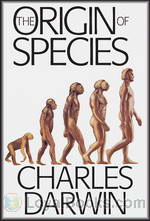 On the Origin of Species by Means of Natural Selection
On the Origin of Species by Means of Natural Selection
Considered to be one of the books that changed the world and how we view ourselves, On The Origin of Species by Charles Darwin was met with incredulous horror when it was first published in 1859. The revolutionary, almost blasphemous ideas it described were seen as antithetical to the existing ideas of Creation contained in the Bible and other religious texts. It was mocked, reviled and the author was personally subjected to vicious persecution by the establishment and theologians. In the years that followed its publication, the book became the subject of furious intellectual and social debate... | |
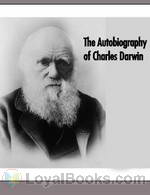 The Autobiography of Charles Darwin
The Autobiography of Charles Darwin
The Autobiography of Charles Darwin is the autobiography of the British naturalist Charles Darwin which was published in 1887, five years after his death. Darwin wrote the book, which he entitled Recollections of the Development of my Mind and Character, for his family. He states that he started writing it on about May 28, 1876 and had finished it by August 3. The book was edited by Charles Darwin’s son Francis Darwin, who removed several passages about Darwin’s critical views of God and Christianity... | |
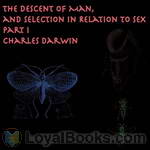 The Descent of Man and Selection in Relation to Sex
The Descent of Man and Selection in Relation to Sex
PART I. THE DESCENT OR ORIGIN OF MAN. Part 1 of 3 of book on evolutionary theory by English naturalist Charles Darwin, first published in 1871. It was Darwin's second great book on evolutionary theory, following his 1859 work, On The Origin of Species. In The Descent of Man, Darwin applies evolutionary theory to human evolution, and details his theory of sexual selection. The book discusses many related issues, including evolutionary psychology, evolutionary ethics, differences between human races, differences between sexes, the superiority of men to women, and the relevance of the evolutionary theory to society... | |
 Formation of Vegetable Moulds through the Action of Worms with Observations on their Habits
Formation of Vegetable Moulds through the Action of Worms with Observations on their Habits
Charles Darwin LL.B F.R.S was the discoverer of evolution and argued the role of "natural selection" in directing the evolution of species. Darwin also had an interest in the formation of soils (moulds) that began relatively early in his life, with a paper "On the Formation of Vegetable Moulds" delivered to the Geological Society of London in 1937. Darwin's last book, The Formation of Vegetable Moulds through the Action of Worms with Observations on their Habits, was completed in 1881. | |
By: Charles Dickens (1812-1870) | |
|---|---|
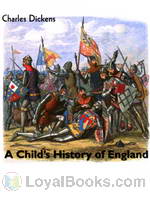 A Child's History of England
A Child's History of England
A Child’s History of England first appeared in serial form, running from January 25, 1851 to December 10, 1853 and was first published in three volume book form in 1852, 1853, and 1854. Dickens dedicated the book to “My own dear children, whom I hope it may help, bye and bye, to read with interest larger and better books on the same subject”. The history covered the period between 50 BC and 1689, ending with a chapter summarising events from then until the ascension of Queen Victoria. | |
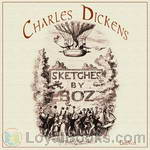 Sketches by Boz: Illustrative of Every-Day Life and Every-Day People
Sketches by Boz: Illustrative of Every-Day Life and Every-Day People
"Sketches by "Boz," Illustrative of Every-day Life and Every-day People (commonly known as Sketches by Boz) is a collection of short pieces published by Charles Dickens in 1836 accompanied by illustrations by George Cruikshank. The 56 sketches concern London scenes and people and are divided into four sections: "Our Parish", "Scenes", "Characters", and "Tales". The material in the first three of these sections is non-fiction. The last section comprises fictional stories. Originally, the sketches were published in various newspapers and periodicals from 1833-1836." | |
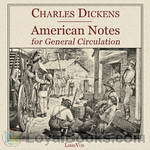 American Notes for General Circulation
American Notes for General Circulation
American Notes for General Circulation is a travelogue by Charles Dickens detailing his trip to North America from January to June, 1842. While there he acted as a critical observer of these societies almost as if returning a status report on their progress. This can be compared to the style of his Pictures from Italy written four years later, where he wrote far more like a tourist. His American journey was also an inspiration for his novel Martin Chuzzlewit. | |
 The Uncommercial Traveller
The Uncommercial Traveller
The Uncommercial Traveller is a collection of literary sketches and reminiscences written by Charles Dickens. In 1859 Dickens founded a new journal called All the Year Round and the Uncommercial Traveller articles would be among his main contributions. He seems to have chosen the title and persona of the Uncommercial Traveller as a result of a speech he gave on the 22 December 1859 to the Commercial Travellers' School London in his role as honorary chairman and treasurer. The persona sits well with a writer who liked to travel, not only as a tourist, but also to research and report what he found; visiting Europe, America and giving book readings throughout Britain... | |
 Pictures from Italy
Pictures from Italy
e: Dickens takes time off his novels to give an account of travels which he and his family undertook in France and Italy. There are vivid descriptions of the places, but also of the people and their lives. | |
By: Charles Dudley Warner (1829-1900) | |
|---|---|
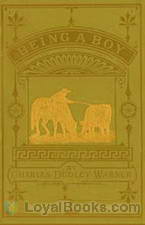 Being a Boy
Being a Boy
Warner's thoughtful and often humorous memoir of his life as a young farm-boy in Charlemont, Massachusetts. (Introduction by Mark Penfold) | |
By: Charles E. Jefferson (1860-1937) | |
|---|---|
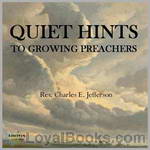 Quiet Hints to Growing Preachers
Quiet Hints to Growing Preachers
Charles Edward Jefferson was pastor of the Broadway Tabernacle in Brooklyn, New York for 33 years. In Quiet Hints, published in 1901, he provided guidance to young preachers on what we would today call ministerial deportment, an old-fashioned word that refers to how a man carries himself, how he presents himself, his manners, his bearing, his habits, and his whole approach to life. Jefferson wrote in short, pithy statements that encapsulate practical truth in just a few words. | |
By: Charles Edward Walker (-1953) | |
|---|---|
 Amateur Fish Culture
Amateur Fish Culture
| |
By: Charles Ellms | |
|---|---|
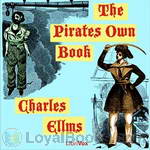 The Pirates Own Book
The Pirates Own Book
Authentic Narratives of the Most Celebrated Sea Robbers. | |
By: Charles Elmé Francatelli (1805-1876) | |
|---|---|
 A Plain Cookery Book for the Working Classes
A Plain Cookery Book for the Working Classes
| |
By: Charles F. Dole | |
|---|---|
 The Coming People
The Coming People
Dole briefly sketches the history of life, and shows how it has a definite direction - toward the survival of the kind and gentle people. It's a challenging, and quite persuasive argument, and also a much needed one in light of the dog-eat-dog theories out there. Dole shows that in our evolving society, our traditional understanding of "survival of the fittest" needs to be updated. A book that was way ahead of its time, yet so suited to it. Some may argue that - since he was writing The Coming People before the first two world wars - that he was obviously wrong... | |
By: Charles Foster Kent | |
|---|---|
 The Making of a Nation: The Beginnings of Israel's History
The Making of a Nation: The Beginnings of Israel's History
Charles Foster Kent was one of the premier scholars in Jewish Studies at the turn of the century. He was particularly well-known for his comparisons of early Christianity to its Jewish roots. He also wrote several distinguished histories of Israel, the Jewish people, Torah studies, and the development of oral Torah. | |
By: Charles Francis Adams, Sr. (1807-1886) | |
|---|---|
 Letters of Mrs. Adams, the Wife of John Adams, Vol. 1
Letters of Mrs. Adams, the Wife of John Adams, Vol. 1
Abigail Adams lived the American Revolution as the wife of one of its central figures--John Adams. Her family correspondence, published along with a memoir by her grandson, Charles Francis Adams, brings that era into eloquent focus. What was it like to hear the cannon's roar from your window? to face pestilence? food shortages? rampant inflation? devalued coinage? to raise four children alone--and earn the money to keep your household afloat, while your husband was engaged in politics and diplomacy miles and oceans away ... | |
By: Charles George Harper (1863-1943) | |
|---|---|
 Revolted Woman
Revolted Woman
One man's opinion of woman in 1894. Charles Harper believes in the superiority of the male sex and the subordination of the female. He paints an entire gender with the same brush. He believes all women to be identical in mind (illogical) and body (knock-kneed) and vastly inferior to the male. He presents 'facts' to support his opinions: "Woman's Mission is Submission" "for woman has ever been the immoral sex" "how truly like nature their tongues say 'No,' when their hearts throb 'Yes, yes!'" "She... | |
By: Charles Godfrey Leland (1824-1903) (1824-1903) | |
|---|---|
 The Mystic Will
The Mystic Will
This book presents a method of developing and strengthening the faculties of the mind, through the awakened will, by a simple, scientific process possible to any person of ordinary intelligence | |
By: Charles H. Mackintosh | |
|---|---|
 Notes on the Book of Genesis
Notes on the Book of Genesis
This chapter by chapter commentary on the first book of the Bible is full of spiritual insights. C H Mackintosh wrote in the late 19th century on a wide range of Biblical topics. He was well known as a speaker in Brethren circles, and his written work continues to inspire Bible students all over the world. | |
By: Charles H. Spurgeon (1834-1892) | |
|---|---|
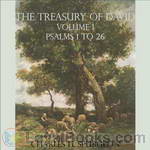 The Treasury of David
The Treasury of David
Charles Spurgeon was a British Particular Baptist preacher who remains highly influential among Christians of different denominations, among whom he is still known as the "Prince of Preachers". In his lifetime, Spurgeon preached to around 10,000,000 people, often up to 10 times each week at different places. He was the pastor of the congregation of the New Park Street Chapel (later the Metropolitan Tabernacle) in London for 38 years.Spurgeon was a prolific author of many types of works. This is the first volume of Spurgeon’s commentary on the Psalms, covering Psalms 1 to 26. | |
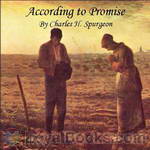 According to Promise, or The Lord’s Method of Dealing with His Chosen People
According to Promise, or The Lord’s Method of Dealing with His Chosen People
Charles Haddon (C.H.) Spurgeon (19 June 1834 – 31 January 1892) was a British Particular Baptist preacher and is still known today as the "Prince of Preachers". He was a strong figure in the Reformed Baptist tradition, defending the Church in agreement with the 1689 London Baptist Confession of Faith understanding, and opposing the liberal and pragmatic theological tendencies in the Church of his day. In his lifetime, Spurgeon preached to around 10 million people, often up to ten times each week at different places... | |
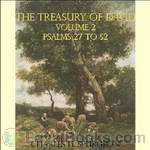 The Treasury of David, Vol. 2 (Abridged)
The Treasury of David, Vol. 2 (Abridged)
Charles Spurgeon was a British Particular Baptist preacher who remains highly influential among Christians of different denominations, among whom he is still known as the “Prince of Preachers”. In his lifetime, Spurgeon preached to around 10,000,000 people, often up to 10 times each week at different places. He was the pastor of the congregation of the New Park Street Chapel (later the Metropolitan Tabernacle) in London for 38 years.Spurgeon was a prolific author of many types of works. His accessible commentaries on the Psalms are a combination of meditation and teaching and are appropriate for anyone wanting to understand these familiar poems on a deeper level... | |
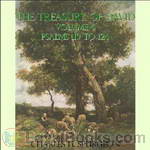 The Treasury of David, Vol. 6 (Abridged)
The Treasury of David, Vol. 6 (Abridged)
Charles Spurgeon was a British Particular Baptist preacher who remains highly influential among Christians of different denominations, among whom he is still known as the "Prince of Preachers". In his lifetime, Spurgeon preached to around 10,000,000 people, often up to 10 times each week at different places. He was the pastor of the congregation of the New Park Street Chapel (later the Metropolitan Tabernacle) in London for 38 years.Spurgeon was a prolific author of many types of works. This sixth volume of Spurgeon’s commentary on the Psalms covers Psalm 119 to Psalm 124. | |
By: Charles Hanson Towne (1877-1949) | |
|---|---|
 Rise and Fall of Prohibition
Rise and Fall of Prohibition
Subtitle: "The Human Side of What the Eighteenth Amendment and the Volstead Act Have Done to the United States" From Chapter 1: "The strange phenomenon of Prohibition, after an appearance amongst us of over three years, is still non-understandable to the majority of a great, and so-called free, people. It is one of the most astonishing manifestations the world has ever witnessed. It came upon us like a phantom, swiftly; like a thief in the night, taking us by surprise. Yet the Prohibitionists will tell you that no one should be amazed, since for years—for almost a century—quiet forces have been at work to bring about this very thing." - Summary by Charles Hanson Towne | |
By: Charles Hardy | |
|---|---|
 The Aural System Being the Most Direct, the Straight-Line Method for the Simultaneous Fourfold Mastery of a Foreign Language.
The Aural System Being the Most Direct, the Straight-Line Method for the Simultaneous Fourfold Mastery of a Foreign Language.
| |
By: Charles Hemstreet (1866-?) | |
|---|---|
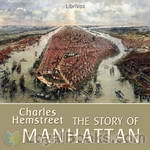 The Story of Manhattan
The Story of Manhattan
The history of New York City is told as a story, in few words. It begins with Henry Hudson's discovery of Manhattan in 1609. And it finishes in 1898 when the island of Manhattan becomes the Borough of Manhattan of Greater New York. | |
By: Charles Howard Hinton (1853-1907) | |
|---|---|
 Fourth Dimension
Fourth Dimension
"Mr Hinton tries to explain the theory of the fourth dimension so that the ordinary reasoning mind can get a grasp of what metaphysical mathematicians mean by it. If he is not altogether successful, it is not from want of clearness on his part, but because the whole theory comes as such an absolute shock to all one's preconceived ideas" - The Bristol Times . This book was published in 1912. The author is attempting to communicate a very complex interweaving of philosophy and mathematics, and it is often difficult to follow his train of thought... | |
By: Charles Hoy Fort | |
|---|---|
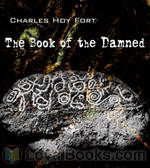 The Book of the Damned
The Book of the Damned
The Book of the Damned was the first published nonfiction work of the author Charles Fort (first edition 1919). Dealing with various types of anomalous phenomena including UFOs, strange falls of both organic and inorganic materials from the sky, odd weather patterns, the possible existence of creatures generally held to be mythological, disappearances of people under strange circumstances, and many other phenomena, the book is historically considered to be the first written in the specific field of anomalistics. – | |
By: Charles Hutton Gregory (1817-1898) | |
|---|---|
 Practical Rules for the Management of a Locomotive Engine in the Station, on the Road, and in cases of Accident
Practical Rules for the Management of a Locomotive Engine in the Station, on the Road, and in cases of Accident
| |
By: Charles James Korinek (1880-) | |
|---|---|
 The Veterinarian
The Veterinarian
| |
By: Charles John Samuel Thompson (1862-1943) | |
|---|---|
 Poison Romance And Poison Mysteries
Poison Romance And Poison Mysteries
A writer and physician, Charles John Samuel Thompson wrote several works on poisons which are still consulted today. He is especially informative on early historical poisons. This book discusses many cases of poisoning, famous and not so, as well as various topics on poisons and poisoning. | |
By: Charles Johnson | |
|---|---|
 A General History of the Pyrates
A General History of the Pyrates
A General History of the Robberies and Murders of the most notorious Pyrates is a 1724 book containing biographies of contemporary pirates. It's author uses the name Captain Charles Johnson, generally considered a pseudonym. The real identity of the author was thought by some scholars to be Daniel Defoe, although this has since been disputed. The publisher Nathaniel Mist or somebody working for him are other suggested authors. In the first volume, "Johnson" sticks fairly close to the available sources, though he embellishes the stories somewhat... | |
By: Charles Kingsley (1819-1875) | |
|---|---|
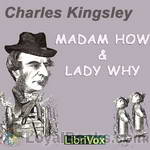 Madam How and Lady Why
Madam How and Lady Why
Did you ever wish you knew how to explain natural phenomena such as earthquakes and volcanoes to your children? Search no more, this book has all the answers (at least all the ones that were known in 1869) and gives them in a pedagogical way. Listed on the Ambleside homeschooling list. | |
 Health and Education
Health and Education
| |
 Alexandria and Her Schools; four lectures delivered at the Philosophical Institution, Edinburgh
Alexandria and Her Schools; four lectures delivered at the Philosophical Institution, Edinburgh
| |
By: Charles Lathrop Pack (1857-1937) | |
|---|---|
 School Book of Forestry
School Book of Forestry
Written by a third-generation timberman, this book discusses what forests are, their primary enemies, and their benefits to others. Additionally, mention is made of the U.S. National Forest system. | |
By: Charles M. (Charles Marcus) Horton (1879-) | |
|---|---|
 Opportunities in Engineering
Opportunities in Engineering
| |